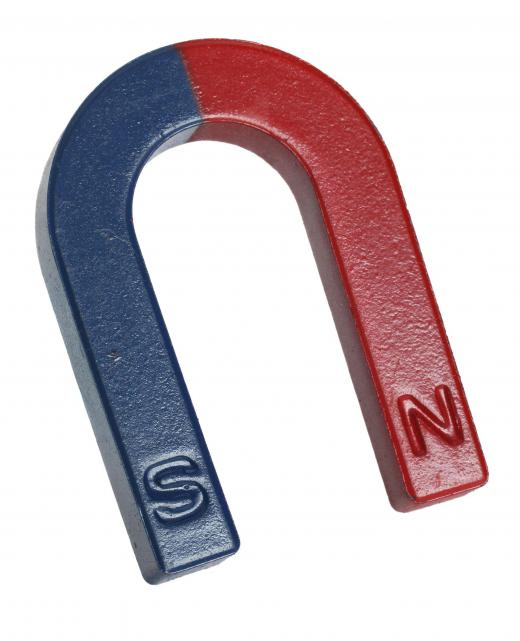What is Magnetic Permeability?
Some materials become magnetized when placed in a magnetic field; the ability of a material to become magnetized is called magnetic permeability. An example of this is rubbing a piece of iron with a magnet: the iron will become magnetized and have its own magnetic field, meaning it has some degree of magnetic permeability.
Many substances, even water, have a degree of magnetic permeability. When a material is placed in a magnetic field, it interacts with the field in one manner or another. The permeability of a substance describes the way the material responds and the effects of the field on the material. A substance with magnetic permeability will either magnetize itself in the direction of the field or in opposition to it. Thus, depending on the permeability, the substance will either be attracted to or repelled by the field.
Measuring Permeability

Scientists represent magnetic permeability with the Greek letter, mu (μ). The International System of Units (SI) measures permeability in henres per meter (H/m) or in newtons per ampere squared (N/A2). The air in a vacuum, also called free space, has a constant value which is called the magnetic constant. This value is represented by the symbol μ0 and is valued as 4π×10−7 H/m which is about 1.2566×10−6 H/m. The numeric value is the same when measured in N/A2.

Magnetic permeability, on the other hand, is not a constant figure; rather, it changes with the position of the material in relation to the magnetic field, the frequency of the field, humidity, temperature, and other factors. Knowing the permeability of a material can also be useful for various industries, for example, materials with high permeability are used in a variety of applications including in electromagnets, transformers, and inductors.
Permeability of Substances
Substances can also be characterized depending on their magnetic permeability and a substance's level of permeability is stated as a pure number. If a substance is classified as paramagnetic, its permeability is measured as a little more than one and such substances are weakly attracted to magnets. If a substance is classified as diamagnetic, the permeability is measured as less than one and such a substance will be repelled by a magnet.
Permeability of Ferromagnetic Metals
A material can also be classified as ferromagnetic; ferromagnetic metals have the greatest permeability of all substances and will become magnetized when exposed to a magnetic field. When the magnetic field in which the ferromagnetic substance is exposed to increases, the magnetic permeability will increase until it reaches its maximum value, at which point it will decrease. Some ferromagnetic materials will become hard or soft magnets; in materials that become soft magnets, such as those materials used in electromagnets, the material will lose its magnetism when the magnetic field is removed. Hard magnets are hard to magnetize, however, but will remain magnetized even when the magnetic field is removed.
AS FEATURED ON:
AS FEATURED ON:












Discussion Comments
What value of magnetic permeability makes a part capable of being magnetized? Worded differently, how low can the permeability be to where the material can no longer be magnetized?
Post your comments